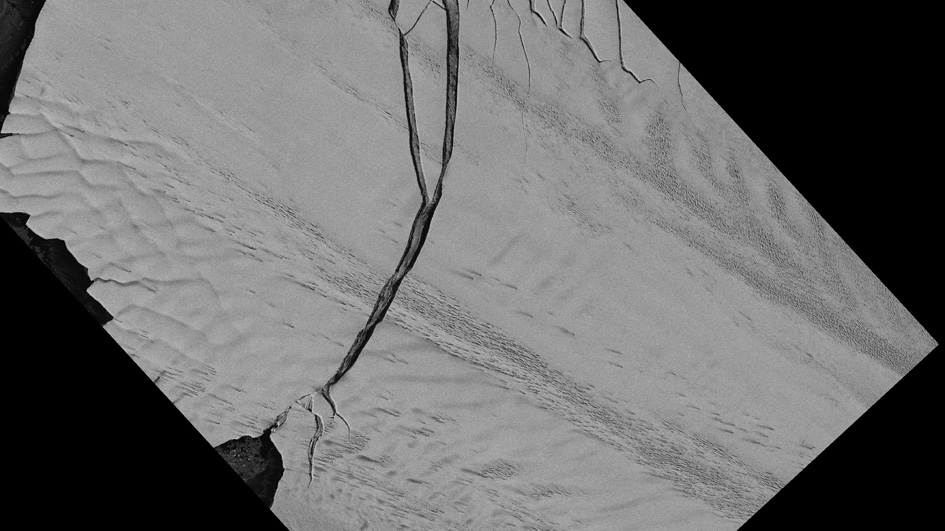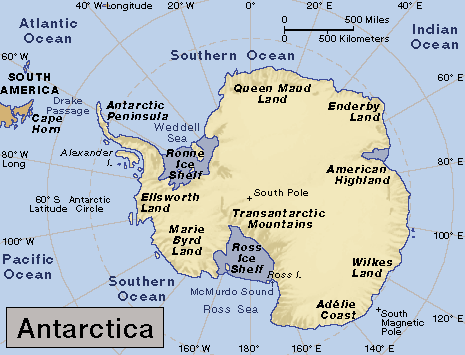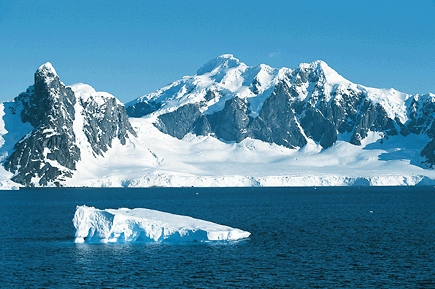Exploring the Five Deeps
Friday, September 27th, 2019September 27, 2019
Last month, on August 24, the American undersea explorer Victor Vescovo reached the Molloy Deep (also known as the Molloy Hole), the deepest point—some 3.4 miles (5.5 kilometers) beneath the surface—of the Arctic Ocean. Upon completion of the dive, Vescovo became the first person to dive to the deepest parts of all five of the world’s oceans. Over the previous 10 months, Vescovo’s Five Deeps Expedition had reached the ultimate bottoms of the Atlantic, Southern, Indian, and Pacific oceans.
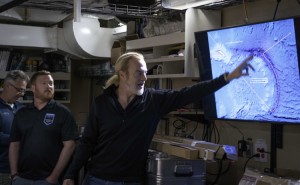
American explorer Victor Vescovo and the Five Deeps team discuss the South Sandwich Trench near Antarctica on Feb. 3, 2019. Credit: © The Five Deeps Expedition
Victor Vescovo was born in Dallas, Texas, in 1966. He developed a love of the ocean as a 20-year officer in the United States Navy Reserve. At the same time, he made a fortune as a private businessman. Vescovo’s taste for adventure pushed him to climb the highest peaks on each of the world’s continents—including Asia’s Mount Everest, the tallest mountain in the world. He has also skied to the North and South poles and is an airplane and helicopter pilot.
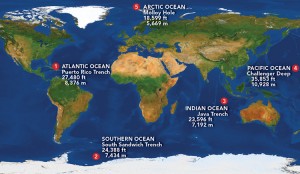
Click to view larger image
The Five Deeps Expedition reached the five deepest points of the world’s oceans. Credit: WORLD BOOK illustration by Brenda Tropinski; © Best Backgrounds/Shutterstock
Having conquered the world’s summits, Vescovo planned the Five Deeps Expedition to explore its depths. Vescovo and his company Caladan Oceanic put together a team of engineers, scientists, and experienced sea personnel. Caladan’s specially designed submersible, Limiting Factor, made the deep dives, supported by the surface vessel Pressure Drop. A submersible is an undersea vessel used for oceanographic research and exploration.
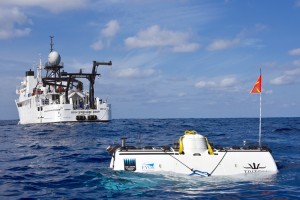
On April 2, 2019, the Five Deeps submersible Limiting Factor rests on the surface of the Indian Ocean behind the support ship Pressure Drop. Credit: © The Five Deeps Expedition
Five Deeps began in December 2018 at the Bronson Deep in the Puerto Rico Trench, the deepest point of the Atlantic Ocean. (A deep is an ocean area with a depth of more than 18,000 feet [5,490 meters]). Vescovo set an Atlantic record by diving alone in Limiting Factor to a depth of 27,480 feet (8,376 meters). (Mount Everest goes 29,035 feet [8,850 meters] in the other direction.) Two months later, in February 2019, Vescovo and his team took Pressure Drop near the coast of Antarctica above the South Sandwich Trench in the Southern Ocean. Vescovo then set a Southern Ocean record by diving solo to a depth of 24,390 feet (7,434 meters). (Determining exact depths can be tricky, but after the Five Deeps numbers are verified, they will slightly redefine the landscape of the world’s ocean bottoms.)
In April, Five Deeps headed to the Indian Ocean and the Java Trench (also called the Sunda Trench) near the Indonesian island of Sumatra. Vescovo took Limiting Factor to a depth of 23,596 feet (7,192 meters) in the Indian Ocean, and captured film of a new species of hadal snailfish (a type of sea snail) and other deep bottom-dwelling creatures. The crew then took Pressure Drop above Challenger Deep in the Mariana Trench, an underwater depression in the Pacific Ocean that is the deepest known spot in the world. There, in May, Vescovo set a record for the deepest ever dive, reaching 35,853 feet (10,927 meters) into Challenger Deep’s eastern pool. The previous depth record was set at Challenger Deep in 1960 by the U.S. Navy Lieutenant Don Walsh and the Swiss oceanographer Jacques Piccard, who dived 35,797 feet (10,911 meters) beneath the ocean surface in the bathyscaph (a special diving craft) Trieste. Vescovo discovered three new species of marine animals on his voyage to the bottom of Challenger Deep—along with pieces of plastic trash and other signs of pollution.

In 1960, Swiss explorer Jacques Piccard (center) descended into the Mariana Trench with Lieutenant Don Walsh (front) of the United States Navy. Credit: Steve Nicklas, NOS/NGS
The Five Deeps Expedition explored another Pacific deep point in June, diving 35,509 feet (10,823 meters) to the bottom of the Tonga Trench’s Horizon Deep. And then in early August, while traveling through the North Atlantic on the way to the Arctic, Five Deeps visited the watery grave of the ill-fated ocean liner Titanic, some 13,000 feet (4,000 meters) beneath the waves. A couple weeks later, the team reached the Molloy Trench off the coast of Norway, where Vescovo made the final dive. The Five Deeps Expedition, whose motto was In Profundo: Cognitio (Latin for In the Deeps: Knowledge), wrapped up in September.
The Five Deeps Expedition traveled more than 46,000 miles (74,000 kilometers), discovered several new species of marine animals, and mapped over 116,000 square miles (300,000 square kilometers) of sea floor. In addition to the piloted dives, the Five Deeps team deployed robotic deep-sea landers in several locations. The expedition also recorded over 500 hours of video that will be made into the Discovery Channel documentary series “Deep Planet,” scheduled to air in 2020.

